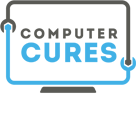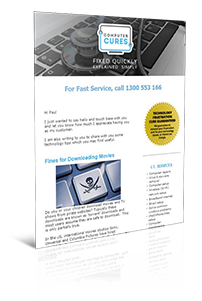Home / Handy Tips /

Websites get hacked. It’s an unpleasant fact, and it’s becoming more and more prevalent every week.
As a website owner or manager, it’s crucial that you’re aware of the risks. A hack can lead to significant data loss, a tarnished reputation, or even legal ramifications. But don’t let that scare you. Understanding the risks is your first line of defence.
Now, how can you tell if you’ve been hacked? Well, you might notice your website slowing down. Maybe there’s content appearing that you didn’t add, or you’re seeing strange warning messages from your browser. Even a sudden drop in traffic could be a telltale sign.
Hackers have different modus operandi – some quietly inject malicious code to steal data, while others are loud, defacing your site or shutting it down completely.
But as alarming as this sounds, don’t panic. You’re not alone, and more importantly, there are steps you can take to regain control.
Unmasking the intruder: how websites get hacked
Ever wondered how hackers gain access to your website? They usually exploit weak spots in website security. Here are a few common methods:
- Code Vulnerabilities – Websites are made from a range of different types of codes including the platform codes, style codes, themes, page builders, plugins or extensions – there’s quite a few different types of codes that hackers are constantly trying to exploit. The code developers have to stay on top of the vulnerabilities and release code updates to restore security. This is why installing the latest platform versions, theme versions, php versions and plugin versions as soon as they are released isn’t just good housekeeping – it’s vital for your website’s security.
- Weak Passwords – Hackers often use brute force attacks to crack weak or common passwords. The stronger and more unique your passwords, the safer your website will be.
- Phishing Attacks – This is the digital equivalent of a con artist’s scam. Hackers try to trick you into revealing sensitive information like login details through deceptive emails or websites that look quite legitimate.
- Malware – By tricking you into downloading harmful software, hackers can gain access to your site and cause serious disruption and damage, and often steal data or install ransomware to demand payment for access. Malware can be spread and injected in a number of ways, including email attachments or downloads, links on compromised sites, etc. We run constant malware detection scans on our clients’ sites, and in fact successfully blocked three malicious attacks on sites in the past 30 days.
- SQL Injection – This is a form of deception whereby invalid data is input into form fields or URL parameters, that tricks a web app into running malicious code. By exploiting vulnerabilities in the database layer of a web application, hackers can gain unauthorised access, manipulate sensitive information, or even delete data.
Remember, understanding these tactics isn’t about inducing fear, but about empowering you with knowledge to better protect your digital space.
Your action plan to restore your website
Let’s imagine for a moment that the unthinkable has happened – you’ve been hacked. Your first response might be to panic, but let’s replace that with action.
Keep calm and formulate a plan
Experiencing a hack can feel like the world is falling apart. But don’t worry, it’s not, and you’re certainly not the first to experience this. The first step? Consider reaching out to IT experts who deal with these situations daily. They have the know-how and experience to guide you through this process.
Identify the type of hack
Every hack is unique, and understanding the nature of the breach will shape your recovery strategy. With the help of IT experts, you can uncover what kind of hack you’re dealing with and what parts of your website are affected.
Here are a few types you might come across:
- Defacement – This is the digital equivalent of graffiti on your website. Hackers replace your website’s content with their own messages.
- Data Theft – Here, hackers access and steal sensitive data. This could be personal details, credit card information, or other valuable data.
- Distributed Denial of Service (DDoS) Attacks – Hackers overwhelm your website with traffic, causing it to crash and making it inaccessible to your users.
- SEO Spam – In these cases, hackers insert spammy keywords or links into your website to manipulate search engine rankings, harming your website’s reputation in the process.
- Malware Distribution – Your website could be turned into a vehicle for spreading malware. Visitors to your site may inadvertently download harmful software.
Cleaning house
One of the first steps in recovery is rooting out the offending code. A digital cleanup crew will scour your website for any malicious scripts or codes lurking around, and remove them. This process halts the hack in its tracks and prevents further damage.
Restoring your website
Now, it’s time to reclaim your website. Depending on the extent of the damage, this could mean restoring from a clean backup or rebuilding certain elements of your website. The safest method is to restore to a clean recent version of your website, although the ability to do this will depend on the type of hosting you have because not all hosting packages include a full backup, they only backup the database. At Commonsense Marketing we take full backups of our clients’ websites every single day, so we can restore to yesterday’s version if the unthinkable did happen.
The art of defence: boosting your website security
Now that you’ve seen the dark side, let’s ensure you’re never visiting it again. Here’s how you can beef up your website’s security.
Update regularly
Just like you’d update your wardrobe, your web manager needs to update your CMS and plugins regularly. Keeping everything up-to-date is one of the simplest yet most effective ways to keep hackers at bay. At Commonsense Marketing we usually do the updates in a controlled environment and test first, because occasionally the latest version of something will cause something older on the site to malfunction, which stops the site working partially or completely
Strengthen your passwords
Think of passwords as the locks on your doors. You wouldn’t use a flimsy lock on your front door, right? Similarly, use complex, unique passwords for your admin account, and remember to update them regularly. We also recommend using a secure cloud password manager to store and protect your passwords, as mentioned in Top Five Tips to Avoid Being Hacked.
Care for your site
Much like a plant, your website needs regular care. Keep your site updated and make regular backups. In the event of a hack, having a clean, recent backup is essential.
Keep a vigilant eye
Finally, stay alert. Your web manager or hosting service should have systems in place that monitor your website’s activities and alert you if anything seems out of the ordinary. Being quick to detect suspicious activity can make a significant difference. The Commonsense Marketing Website Management package takes care of fast hosting, daily backups, security monitoring and all the updates done for you to keep your site safe and performing correctly.
Final thoughts
The world of the web might seem alarming with the threat of hackers. But with knowledge, preparation, and a good tech support team, you can navigate the digital space confidently and securely. Remember, when it comes to website security, an ounce of prevention is worth a pound of cure.








Leave A Comment